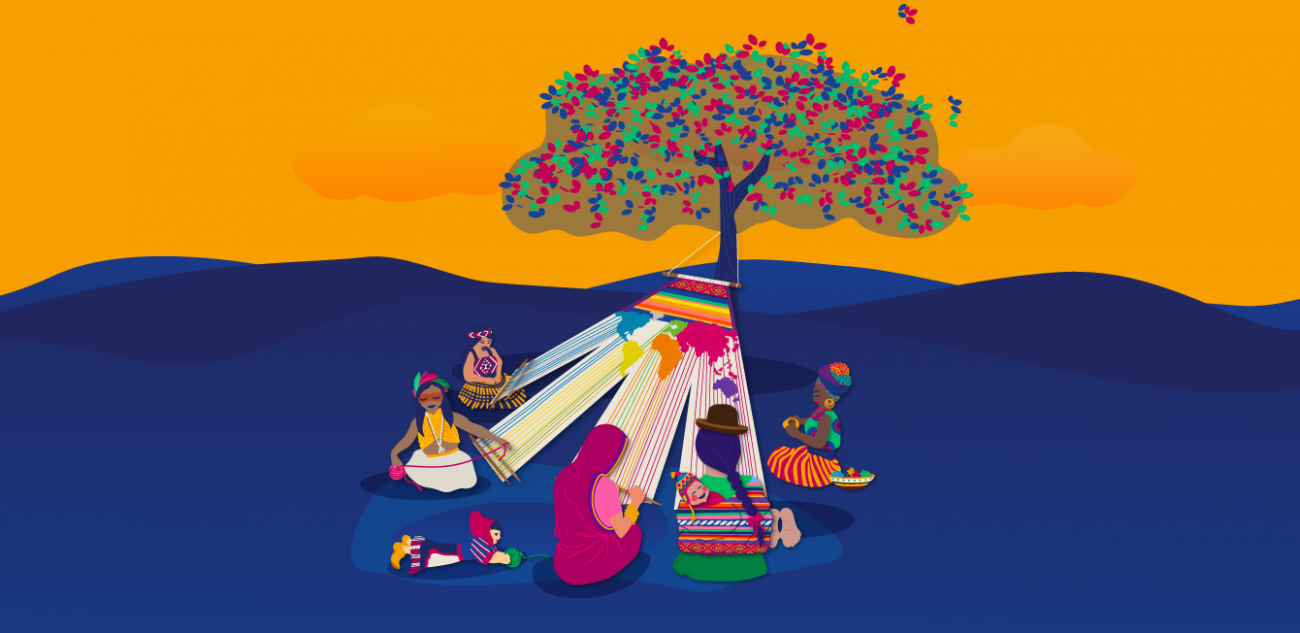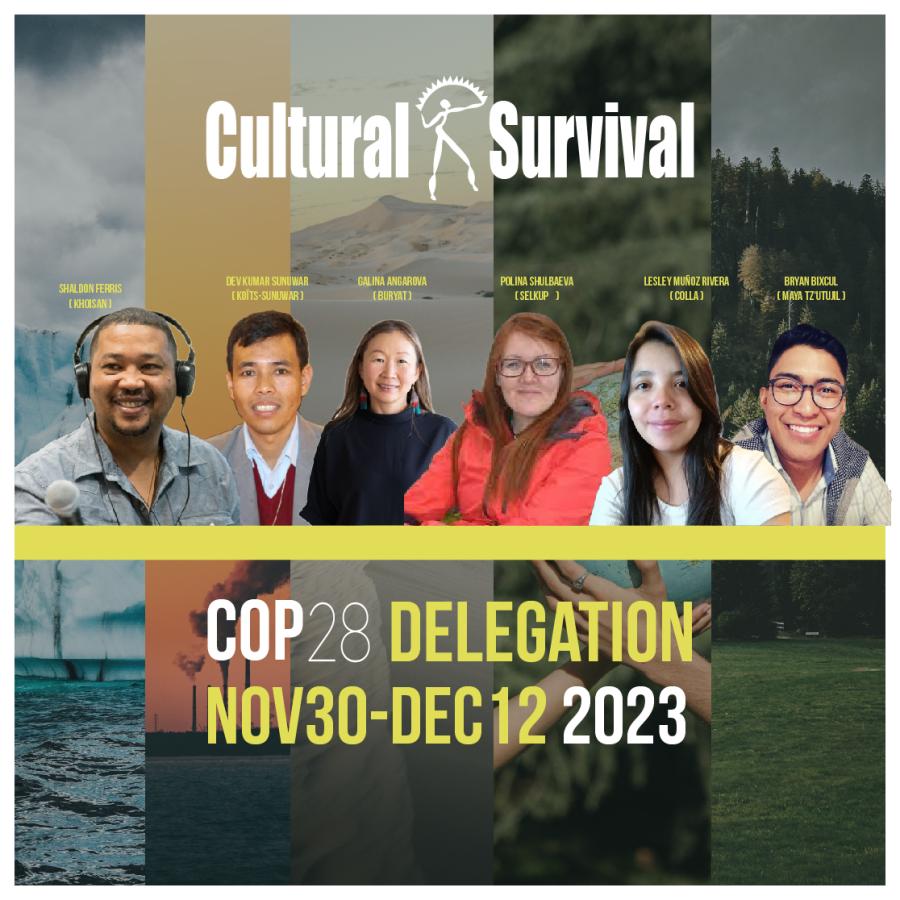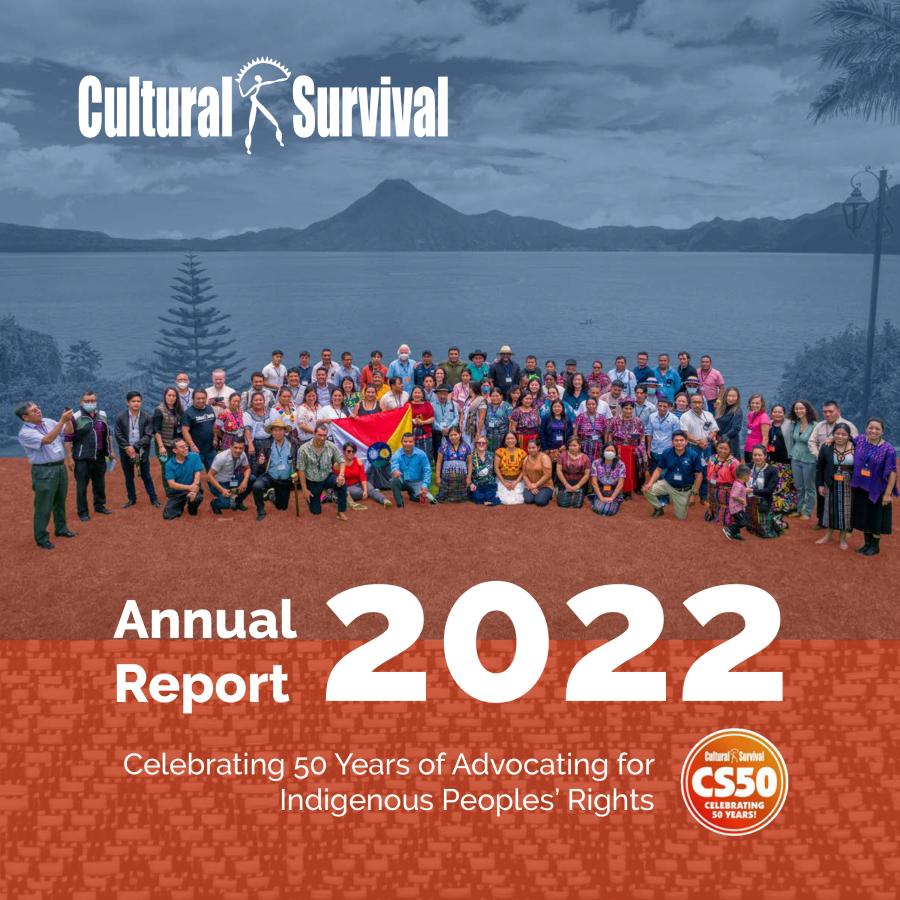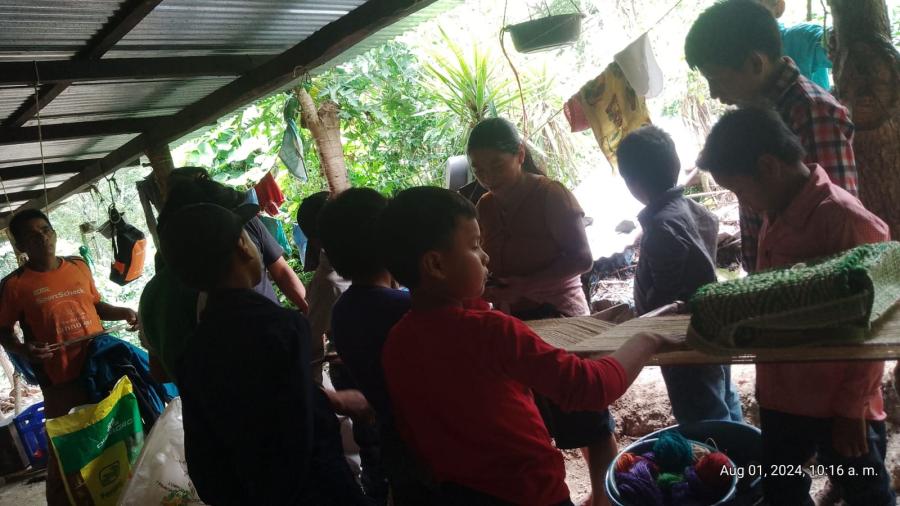
By Ariel Iannone Román
In commemoration of the 25th anniversary of the Beijing Declaration and Platform for Action, which was formulated during the Fourth World Conference on Women in Beijing in 1995, the International Indigenous Women’s Forum (FIMI) released its report: Global Study on the Situation of Indigenous Women and Girls. Covering five regions of the world — the Americas, Asia, Africa, the Arctic, and the Pacific — the report outlines the progress that has been made over the last 25 years, as well as ongoing challenges within the 12 critical areas of concern that were outlined by the Beijing Declaration in 1995.
The Fourth World Conference on Women in Beijing was the first UN conference to have substantial participation by Indigenous women, with over 100 representatives attending from different regions of the world. Though Indigenous women had already been organizing their own conferences and meetings in their home countries for years, the conference enabled them to overcome linguistic barriers, recognize themselves in their diversity, and build a common position to make visible their priorities and proposals as women and Indigenous Peoples. The goal was and continues to be the achievement of true visibility, to ensure that the nations of the world see Indigenous women as “protagonists of change and subjects of rights, with decision-making power in international, national and local agendas.”
The main body of the Global Study analyzes the 11 of the 12 critical areas of concern as they were outlined in the Beijing Declaration and Platform for Action: women and poverty, education and training of women, women and health, violence against women, women and armed conflict, women and the economy, women in power and decision-making, institutional mechanisms for the advancement of women, human rights of women, women and media, and women and the environment. In general, the Beijing Declaration asked governments to commit to removing all “obstacles to women’s active participation in all spheres of public and private life by guaranteeing women a full and equal share in economic, social, cultural and political decision-making.” The problem is that many of these obligations, as they were outlined in the Beijing Declaration, do not fully capture the reality of Indigenous women and girls.
Access to land and natural resources is “essential to the ability of Indigenous Peoples to maintain and develop their distinct identities and cultures, as well as to develop economically.” The Global Study emphasizes “self-determination and the relationship with land” throughout their analysis. It acknowledges the Beijing Declaration of Indigenous Women, which states that any analysis must consider the “currently dominant growth-oriented development model based on capitalism and globalization, resulting in new forms of economic and political colonialism by a few powerful nations.” The Global Study also acknowledges how the continual “imposition of Western orientation in all disciplines such as philosophy, politics, economics and science undervalues and discriminates against differing cultures, as well as against the ancestral knowledge of Indigenous Peoples and Indigenous women, resulting in various forms of discrimination and, ultimately, racism.”
Indigenous Peoples today represent 6.2 percent of the world’s population, and yet they make up 15 percent of the world’s impoverished people. The Global Study comments that statistical measurements of poverty don’t always take cultural knowledge and livelihood assets of Indigenous women into consideration. For this reason, Indigenous women, especially in the American region, prefer to use the term “impoverishment.” This is intended to counteract the narrative of “poverty,” which usually leads to public policies based on economic assistance while disregarding Indigenous women’s positions as agents of change who can and should be included in public policy decisions.
In the 25 years since the Beijing Conference, there has been an improvement in access to basic education for women and girls around the world, but Indigenous women and girls still experience “higher gender disparities and lower educational attainment compared to non-Indigenous women.” Indigenous women in Africa and Asia-Pacific still struggle to receive a basic education, and in all regions, secondary and tertiary education. Even in countries where Indigenous women complete higher levels of education, there are still barriers to employment. A key challenge is the “limited access to quality culturally and linguistically relevant education” in all regions, which undermines the “transmission and preservation of Indigenous language and culture.”
In the category of women and health, Indigenous women experience poorer health indicators than non-Indigenous women, regardless of location or socio-political situation. There is limited to no access to “quality and culturally and linguistically relevant health care services (including mental health care services) [...]” As is the case for all 12 critical areas of concern, the health of Indigenous women and girls is impacted by an intersection of historical and current factors, including “the effects of colonization, environmental violence, exclusion, inequality, the loss of ancestral land, cultural discriminatory practices by mainstream health care providers and discrimination with regard to traditional health practices.”
Gender-based violence against Indigenous women and girls includes “domestic violence, physical and sexual violence, disappearances, femicide, trafficking for sexual exploitation, forced surrogacy and early marriage, among others.” Unfortunately, there is a particular lack of research and data in this area, partially due to “lower reporting rates, limited or no access to quality and culturally and linguistically relevant services, [and] racialized policing.” Despite this, available information demonstrates that “Indigenous women experience higher rates of gender-based violence compared to non-Indigenous women.” This is exacerbated by the fact that there is “limited or no access to justice and insufficient relevant public policies to prevent and protect [Indigenous women] from violence.”
Armed conflicts are a global problem that disproportionately impacts Indigenous women because of their relationship with land. Indigenous Peoples are severely impacted by land-related violence or forced removal in almost every region, and Indigenous women and girls are subjected to gender-based violence on top of that. This is especially the case when land has been militarized by national armies or organized crime, or encroached upon by the expansion of military bases. Despite this, Indigenous women “do not see themselves as passive victims but have taken up roles as mediators and peacebuilders.”
Indigenous women rely heavily on informal work and are also responsible for much of the unpaid care and domestic work in their communities. They are subjected to a slew of economic challenges, including the risks of climate change and “macroeconomic adjustment policies […]; discriminatory laws related to land rights, natural resources, loans and credit; and aggressive development projects […] which result in contamination, dispossession and loss of traditional livelihood assets.” Indigenous Peoples live in “some of the most fragile ecosystems in the world.” Furthermore, they are disproportionately impacted by “the environmental violence caused by large development projects, extractive industries, agribusiness and military contamination.”
Despite the fact that Indigenous women have succeeded in establishing political participation at the national and international levels, they continue to face barriers to effective and equal participation both in Indigenous and non-Indigenous arenas on the local, national, and international levels. Though Indigenous women are keepers of knowledge for mitigation and adaptation in the face of climate change, they are still “underrepresented in environmental policy-making at multiple levels.” There is a general lack of disaggregated data on Indigenous Peoples, which undermines attempts to demonstrate socio-economic and cultural inequalities, and jeopardizes the visibility of Indigenous Peoples in official data. This is made worse in countries where Indigenous Peoples are not recognized by national constitutions and laws. All of this, in turn, restricts the advancement of Indigenous women through institutional mechanisms. Even when institutional mechanisms are successfully established, governments and non-governmental organizations often lack the capacity and economic resources to ensure their effective implementation.
Indigenous women are often represented in media with negative stereotypes and language that reinforces racism and racial discrimination. This is why it is important for Indigenous women to have their own access to media, which can be used as a tool for “exercising IW’s rights to self-determination, enabling their empowerment through the reclamation of their narratives and allowing them to be voices for social change in the fight against gender discrimination, racism and human rights violations.” Indigenous women’s participation in media has increased, though many obstacles persist, including “poor communication infrastructure in Indigenous territories, gender discrimination, legal barriers to the establishment of community media and the criminalization of journalists and reporters, among others.”
The Global Study concludes by reaffirming the remarkable progress that Indigenous women have made in promoting critical issues both nationally and internationally. It reinforces the idea that individual and collective rights must be acknowledged simultaneously, and that all challenges must be analyzed with “careful consideration for the relation between Indigenous Women and the land, and in the context of land rights and land dispossession.” Finally, it points out how the COVID-19 pandemic has irrevocably exposed inequalities on a national and global scale. In the wake of the pandemic, whose consequences will likely be felt far into the future, governments should “consider Indigenous Peoples’ and Indigenous Women’s voices, their ancestral knowledge and their good practices of resilience in developing holistic responses to address this emergency and its aftermath.”
Read the Global Study in full here: Global Study



